Properties of 2D Shapes Worksheets
Parallel and Perpendicular Lines
Year groups: 7, 8
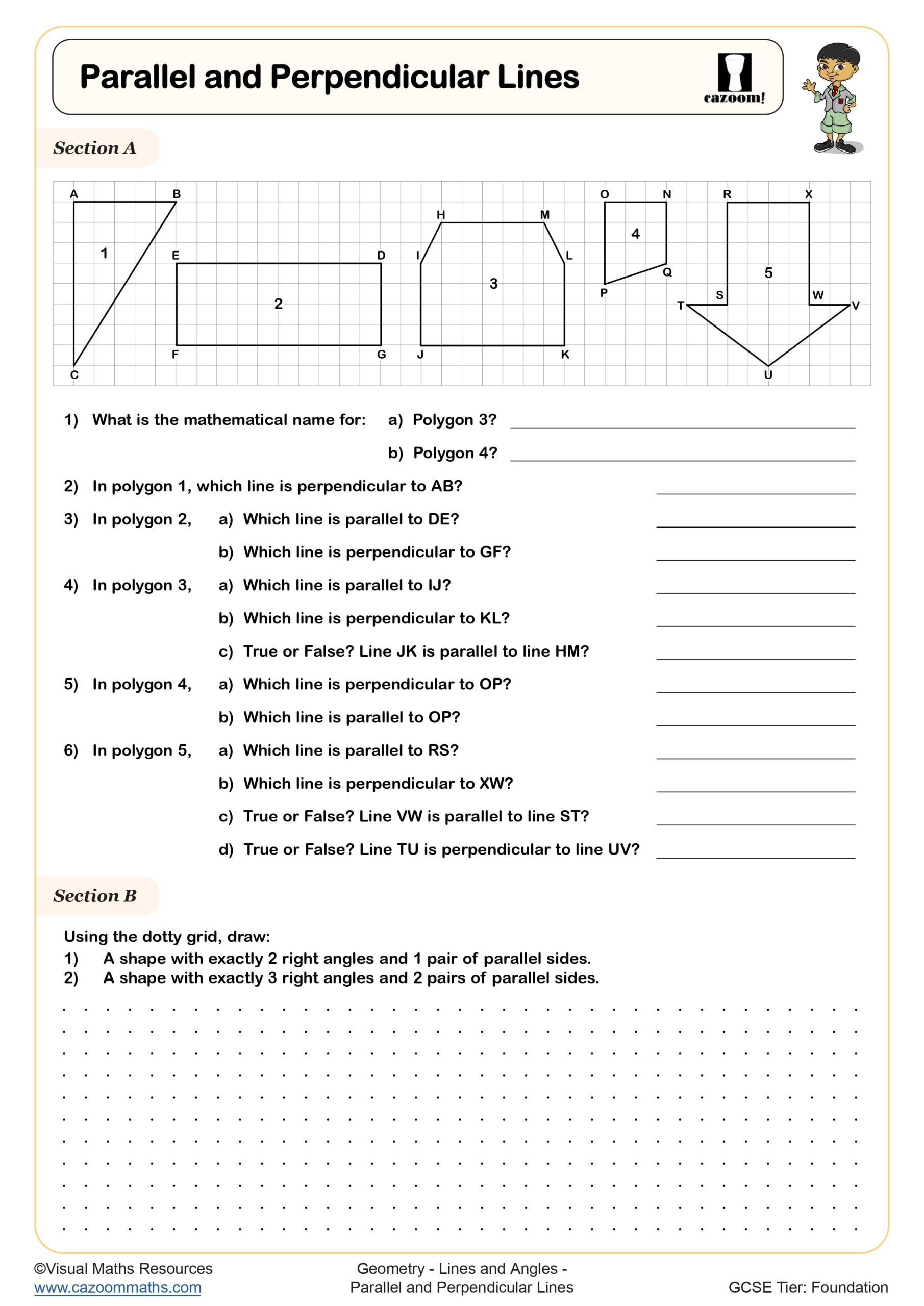
Properties of Quadrilaterals (A)
Year groups: 7, 8
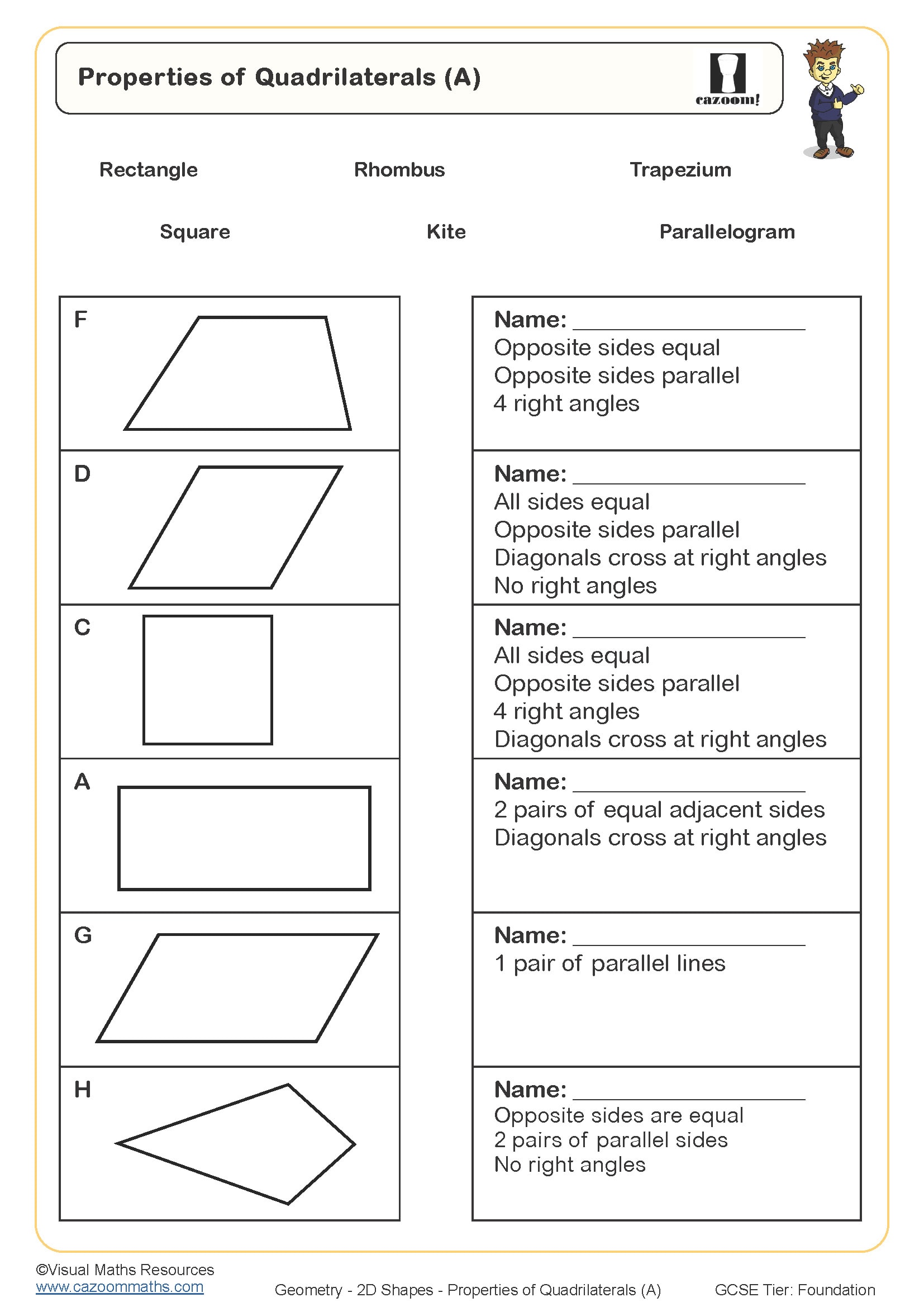
Properties of Quadrilaterals (B)
Year groups: 7, 8
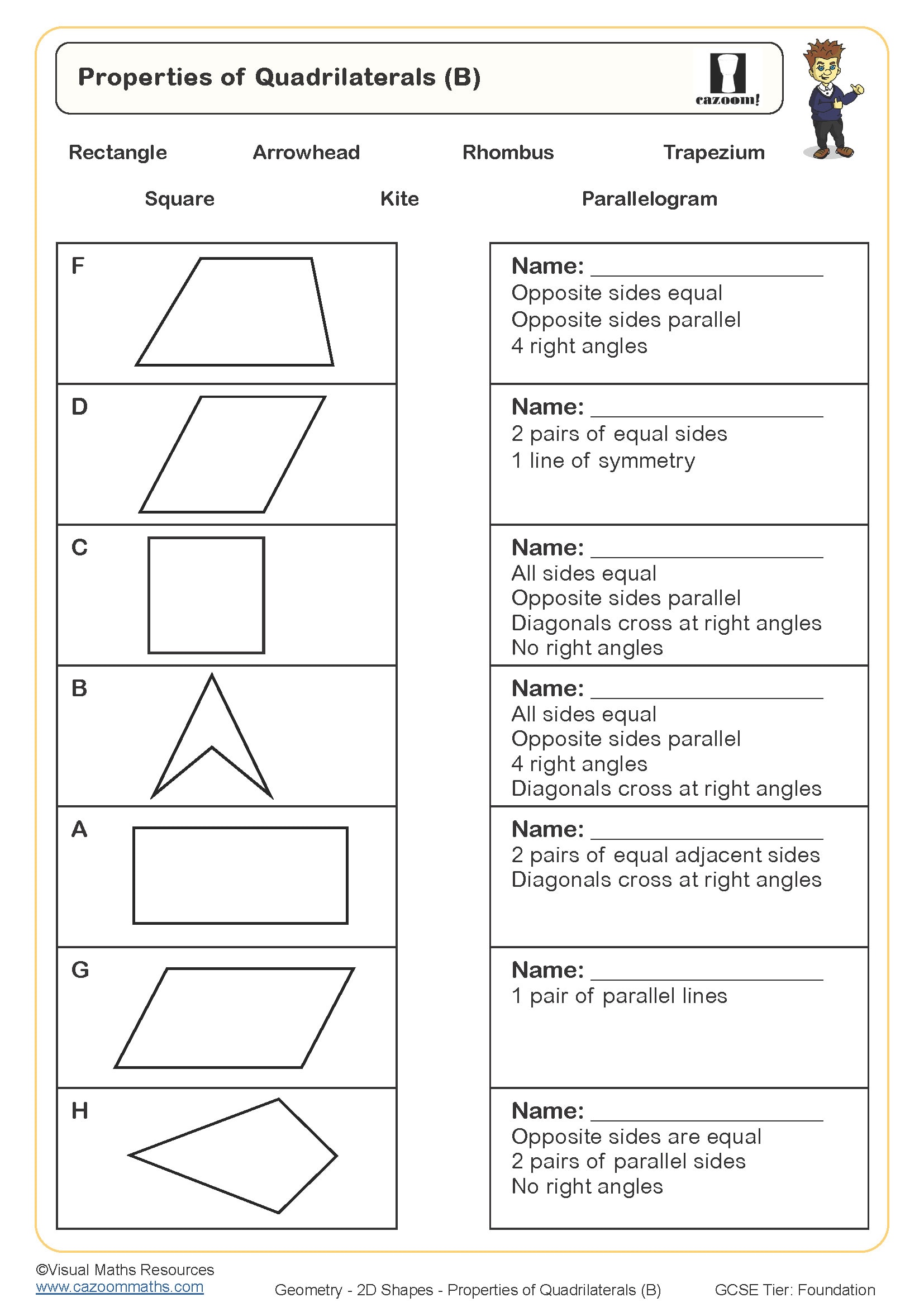
Properties of Quadrilaterals (C)
Year groups: 7, 8
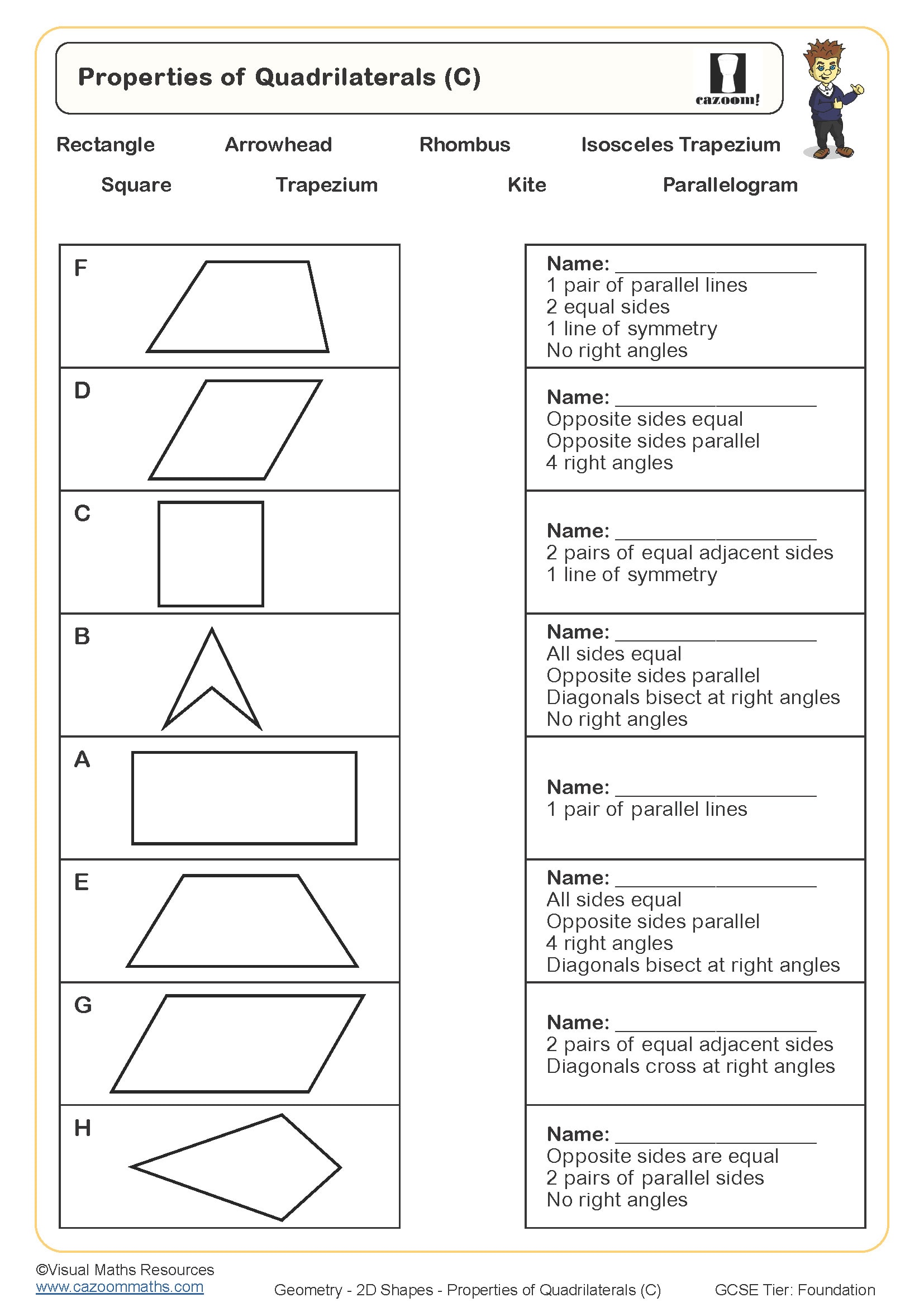
Properties of Quadrilaterals (Same and Different)
Year groups: 7, 8
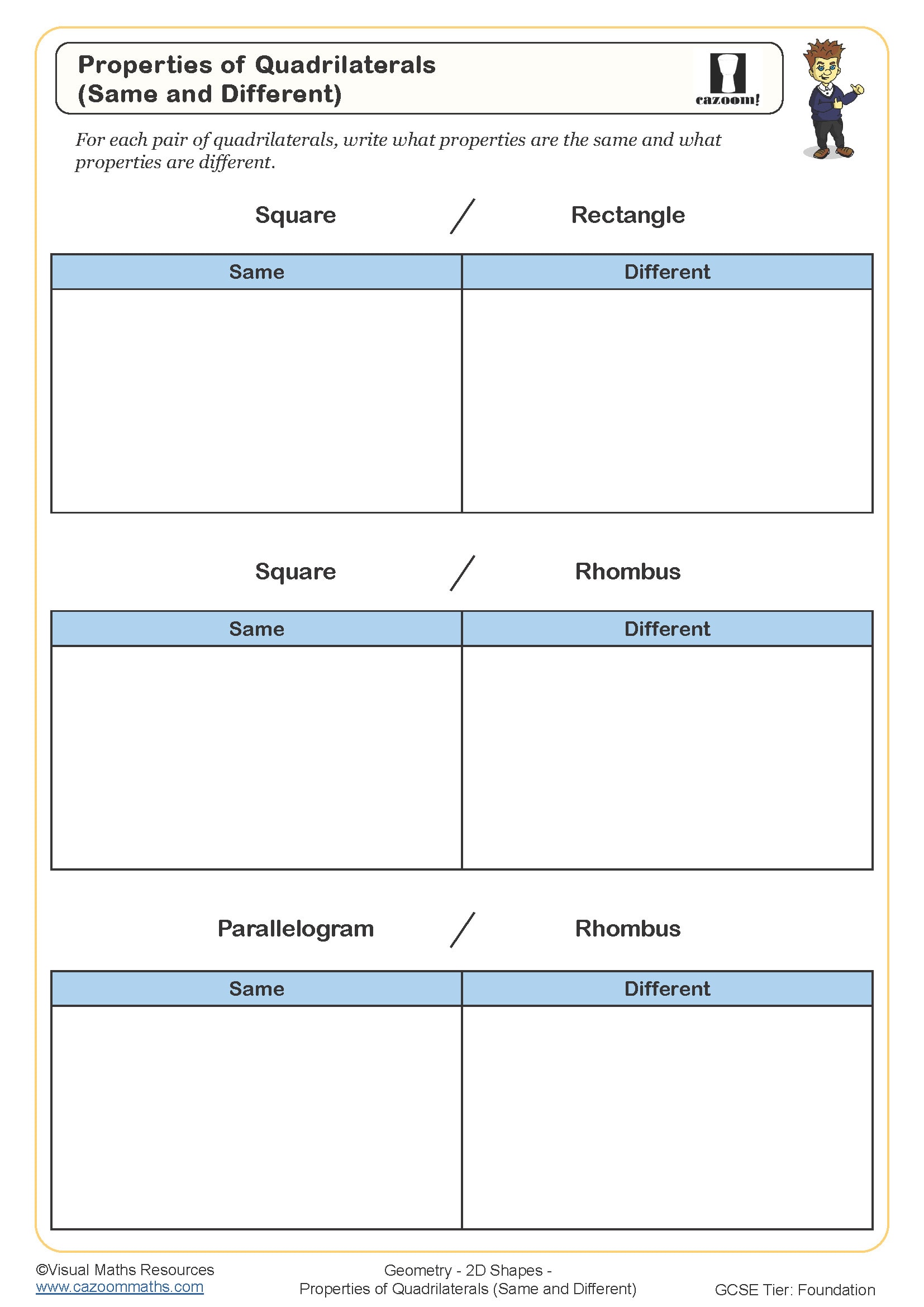
Properties of Quadrilaterals (Same and Different) (With Clues)
Year groups: 7, 8
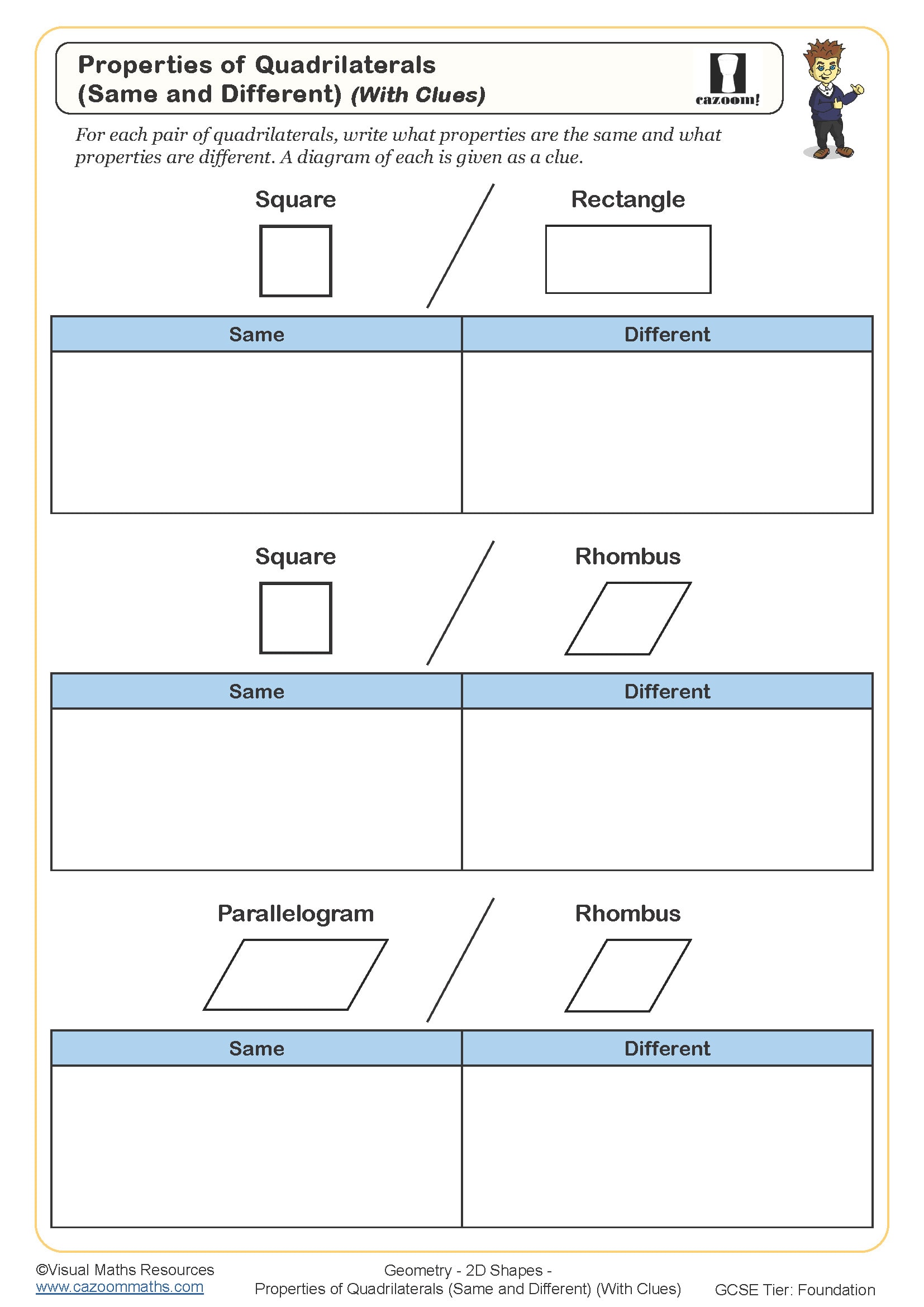
Properties of Triangles
Year groups: 7
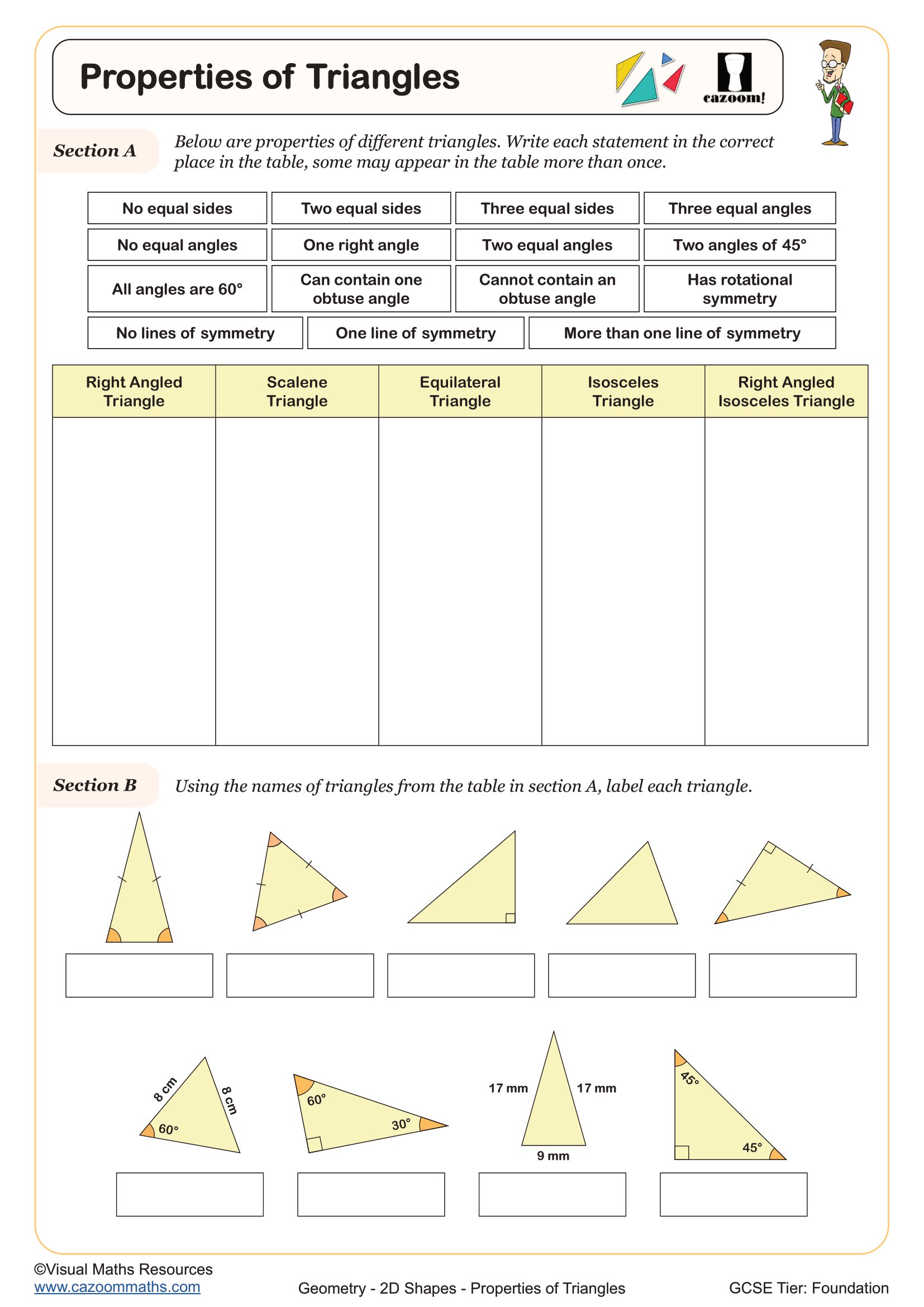
Parts of a Circle
Year groups: 8, 9
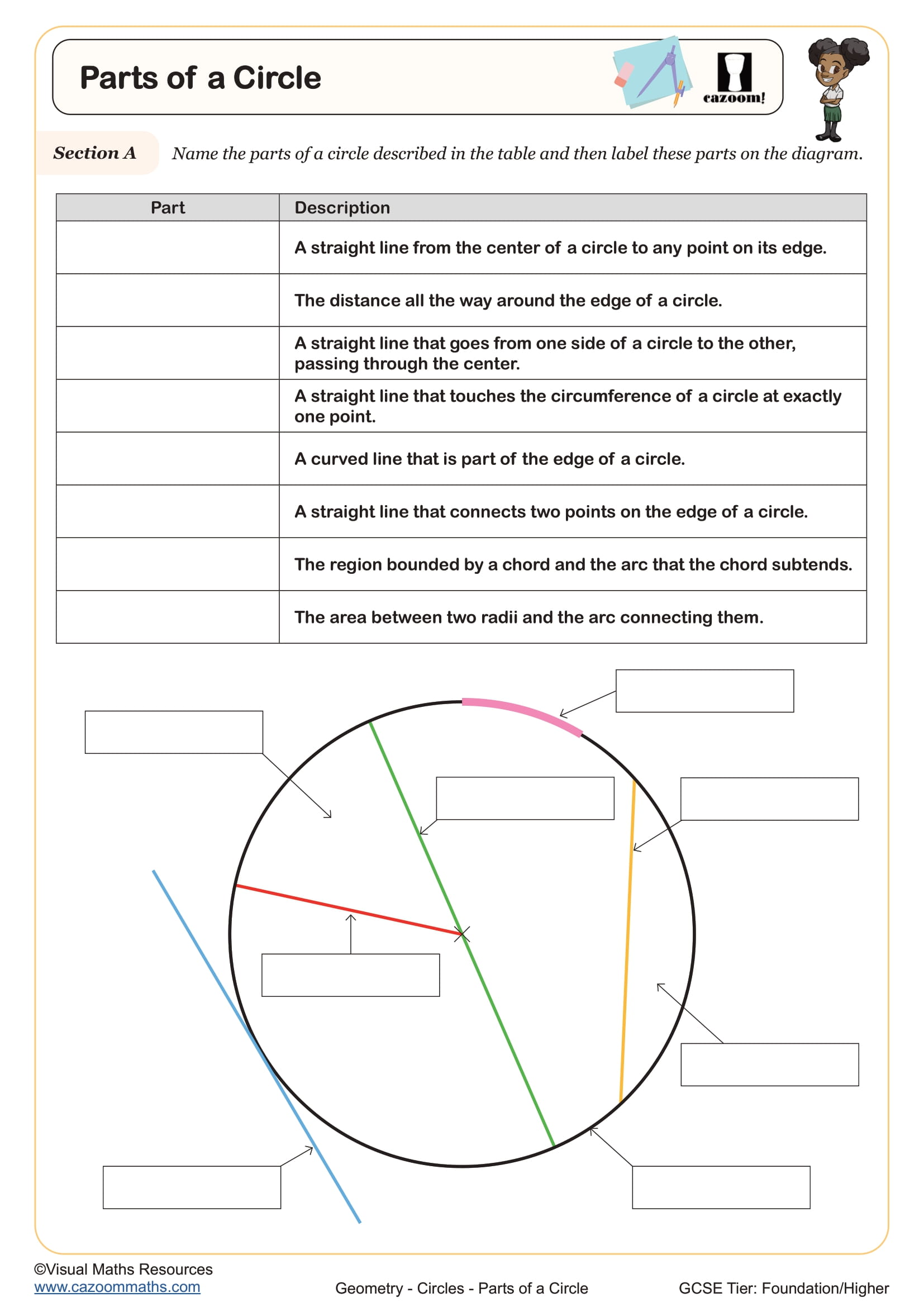
Printable PDF KS3 Properties of 2D Shapes Worksheets with Answers
If you’re a teacher or a parent trying to help your students or children, our printable properties of 2D shapes worksheet collections are an ideal choice. We have created this range of printable 2D shapes resources to help students master this tricky geometry topic. Each worksheet comes is provided with answers and is available in easy-to-download PDF format.
The Importance of Learning 2D Shapes for Students
A solid understanding of 2D shapes is essential to a well-rounded mathematical education.
• Preparing for Advanced Geometry: A solid understanding of the properties of 2D shapes prepares your students or child for further studies in geometry and makes the transition to the higher levels much easier.
• Enhancing Problem-Solving Abilities: Beyond geometry, learning about 2D shapes improves students’ problem-solving skills across various mathematical areas.
Properties Of 2D Shapes
The usual features of any 2D shape are that they are flat and only have length and width, with no thickness or height.
These shapes include squares, rectangles, circles, triangles, and other shapes with many sides, like pentagons and hexagons. In the real world, you can see these 2D shapes in things like round logos, rectangular boxes, square plates, tiles, and even slices of pizza that are shaped like triangles!
Use of 2D Shapes in Real Life
Understanding 2D shapes in mathematics has real-world applications that extend beyond the classroom.
These basic geometric principles are essential in fields like architecture, where the use of shapes such as rectangles and triangles contributes to building stable structures. In design and art, knowing 2D shapes helps create balanced compositions. Everyday tasks like planning a home renovation or arranging furniture also rely on drawing shapes and their properties, like area and perimeter.